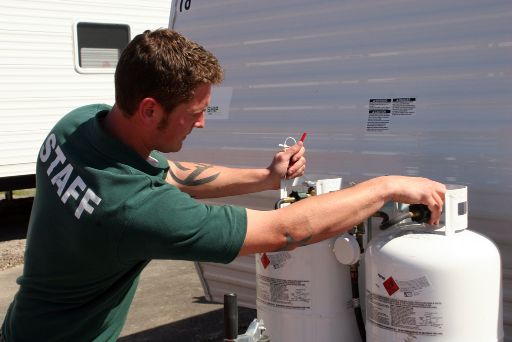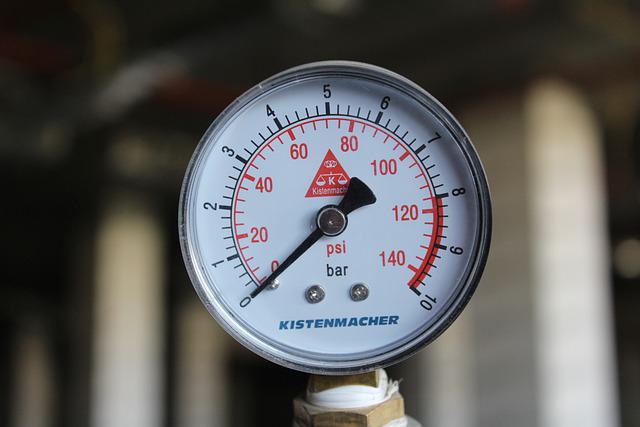
If the propane tank is a rental, it is owned by the propane company, and it is not recommended to paint it without their permission. The propane company may have specific regulations and requirements for their tanks, and painting it may interfere with these regulations and compromise the safety of the tank. It is best to contact the propane company for guidance and clarification on whether painting is allowed and what steps, if any, need to be taken before doing so.
If you’re allowed however, it is important to check with the propane company beforehand to ensure that the new paint does not interfere with the proper functioning of the tank, such as covering warning labels, markings or other safety features. Additionally, it is recommended to use only paint that is specifically approved for use on propane tanks.
On one hand, many homeowners may want to paint their propane tanks to match the color of their homes or to simply improve their appearance. This is especially true for propane tanks that are located in plain sight, as they can detract from the overall aesthetic of a property.
It is important to consider the safety implications of painting a propane tank. Propane tanks are often painted with special markings and labels for safety purposes, and painting over these can obstruct important information and potentially cause safety hazards. For example, if you paint over a warning label, it may become difficult to identify the tank’s contents in the event of an emergency.
It is also important to consider the regulations that apply to propane tanks. It is recommended that homeowners check with their propane supplier before painting their tanks. Some propane companies may have specific guidelines that prohibit the painting of their tanks, while others may allow it under certain conditions.
When painting a rental propane tank, it is essential to use only paint that is specifically approved for use on propane tanks. This type of paint will not interfere with the proper functioning of the tank and will not cause any safety hazards.
While painting a rental propane tank can improve its appearance, it is important to consider the safety implications and follow the guidelines set by the propane company. If in doubt, it is always best to consult with your propane supplier before making any changes to your tank. By doing so, you can ensure that your propane tank continues to function safely and effectively.
If You’re Not Allowed to Paint, Here’s a Cool Idea How to Hide the Tank
Use quality camouflage netting to hide propane tanks on your yard. Propane tanks are a necessary component of many outdoor living spaces, but they can also be an eyesore in an otherwise beautifully landscaped yard. Fortunately, there’s a simple solution to this problem: using quality camouflage netting to hide the tanks.
Camouflage netting is made from durable, weather-resistant materials and is designed to blend in with its surroundings. This makes it an effective tool for hiding propane tanks, which can often be an unsightly part of a yard. The netting is easy to install, simply by draping it over the tank, and it will provide a visual barrier that will effectively conceal the tank while also providing a protective covering to prevent damage.
When shopping for camouflage netting, it’s important to look for high-quality materials that are specifically designed for outdoor use. Look for netting that is made from durable, weather-resistant materials, such as heavy-duty nylon or polyester, and that is treated to resist fading, mildew, and UV rays.
Additionally, you want to look for a netting design that matches the environment you’re placing the propane tank in. If your yard has a lot of greens and browns, for example, you’ll want to choose a netting with those same colors. If you’re placing the tank near trees, look for a netting with a wooded or forest design.
Using quality camouflage netting to hide propane tanks on your yard is an effective and affordable solution that can help you enjoy your outdoor living space without having to deal with the unsightly appearance of propane tanks. So, if you’re tired of seeing your propane tank every time you step outside, consider investing in a quality camouflage netting today.
Check Your Rental Agreement If You Are Allowed to Paint
Before deciding to paint a rental propane tank, it is crucial to check the terms and conditions of your rental agreement with the propane supplier. The agreement will likely outline any restrictions or requirements for modifying the tank. Some suppliers may allow you to paint the tank as long as it does not affect its functionality or safety, while others may prohibit any alterations to the tank.
It’s important to follow the guidelines set by the supplier, as failure to do so could result in penalties or termination of the rental agreement. Before painting the tank, it’s also a good idea to consult with the supplier to make sure you are using a safe and appropriate paint that will not harm the tank or void the warranty.
To Make a Conclusion
Whether or not you are allowed to paint a propane tank that is a rental will depend on the terms and conditions outlined in your rental agreement with the propane supplier. Some suppliers may allow you to paint the tank as long as it is not done in a way that affects its functionality or safety, while others may prohibit any alterations to the tank. It’s important to check with your supplier before making any changes to the tank, as failure to do so could result in penalties or termination of the rental agreement. If you’re looking to conceal a rental propane tank in your yard, consider using quality camouflage netting, which can provide an effective visual barrier while also protecting the tank from damage.

Mike is an experienced propane technician with over 15 years of professional experience in the field. He has dedicated his career to helping customers with their propane needs, from installation to maintenance and repair. Together with Jeremy, he co-founded this website to provide useful information and guidance to customers seeking reliable propane services.



